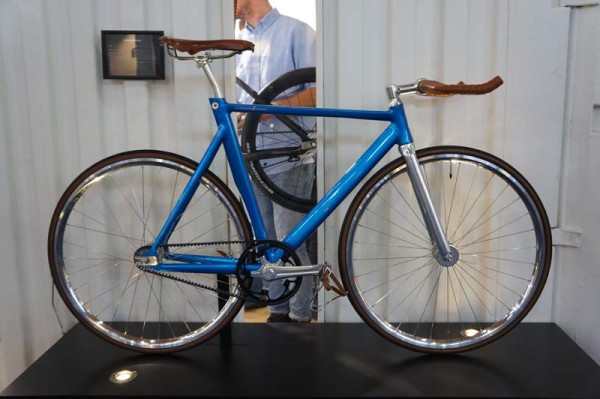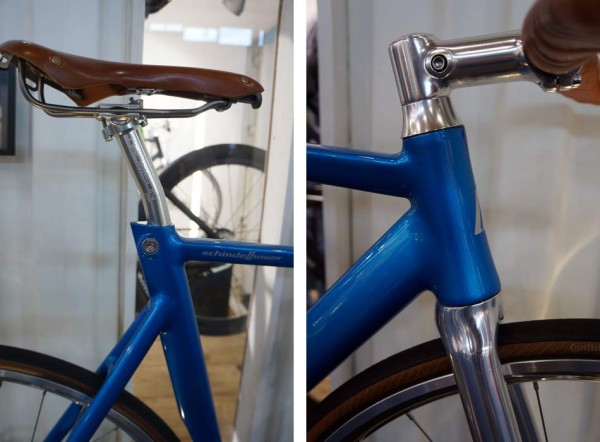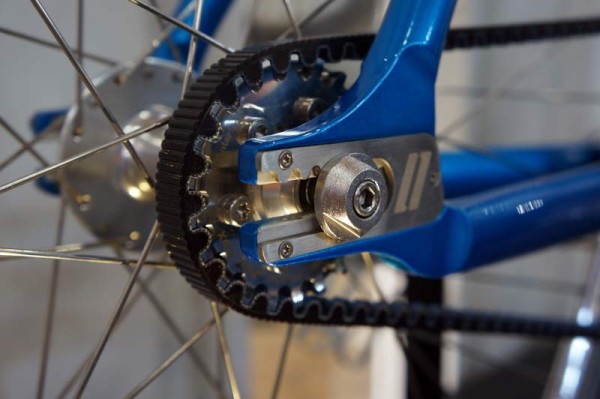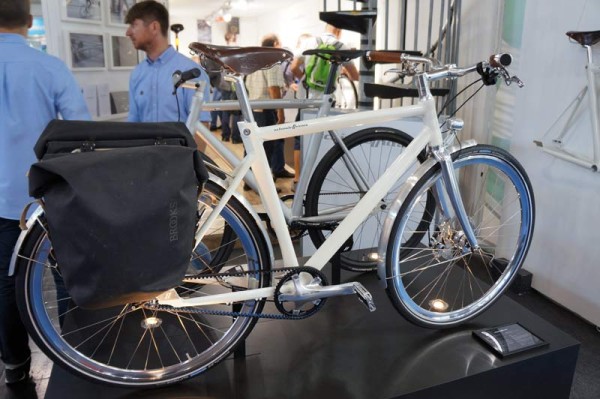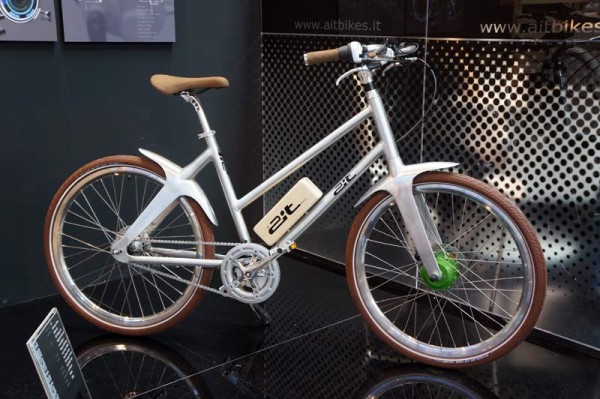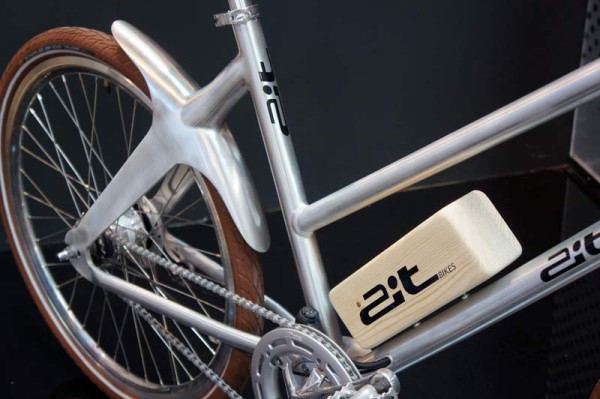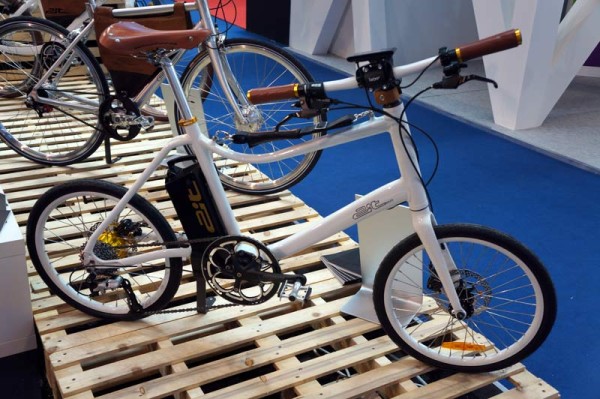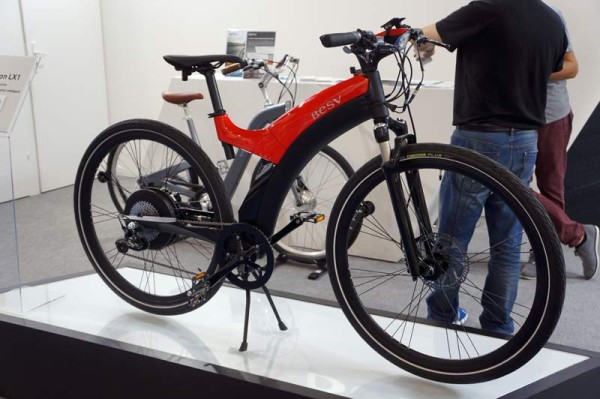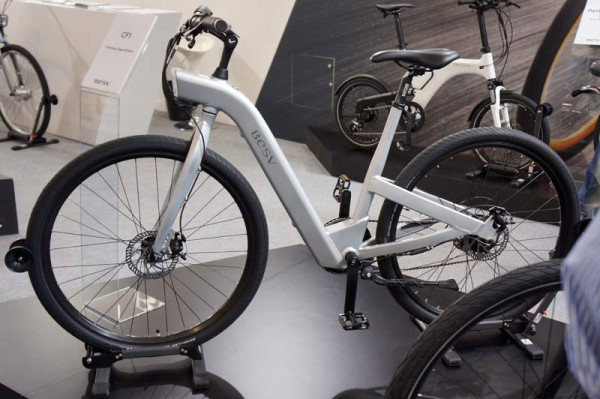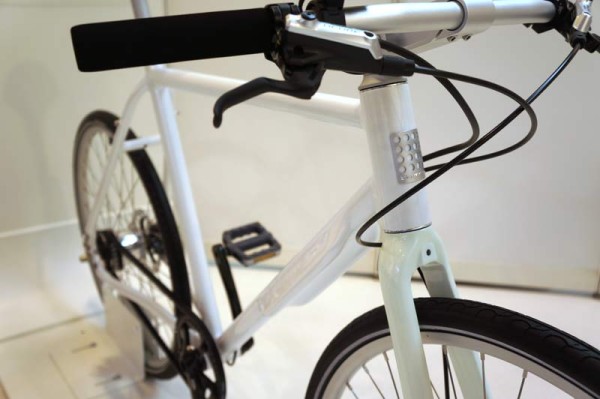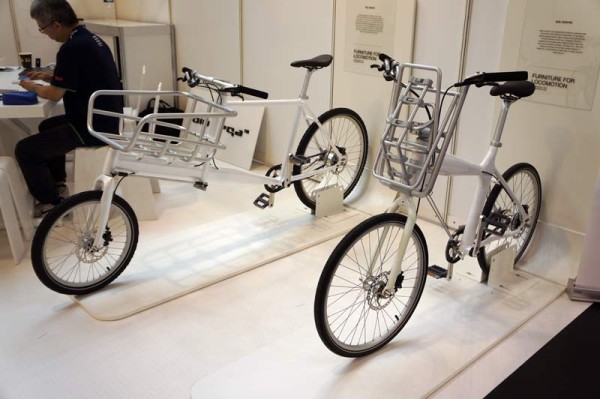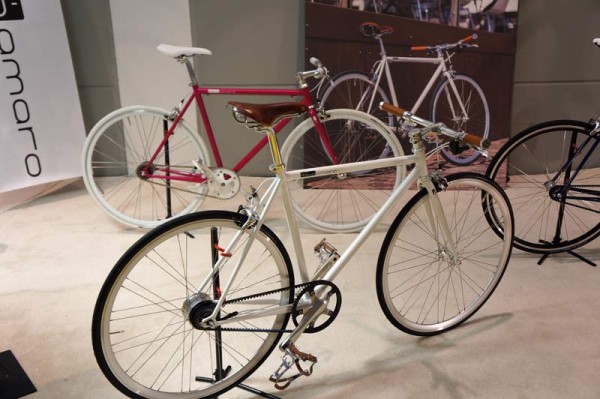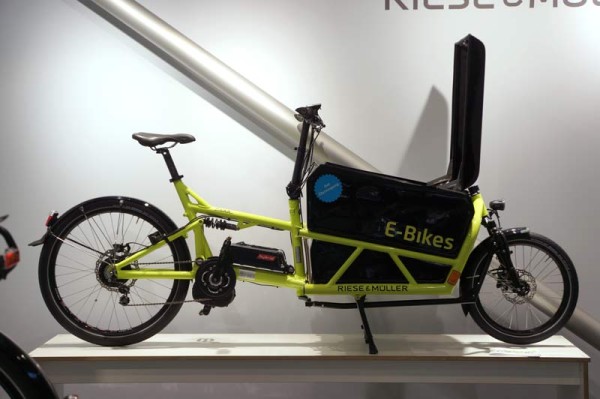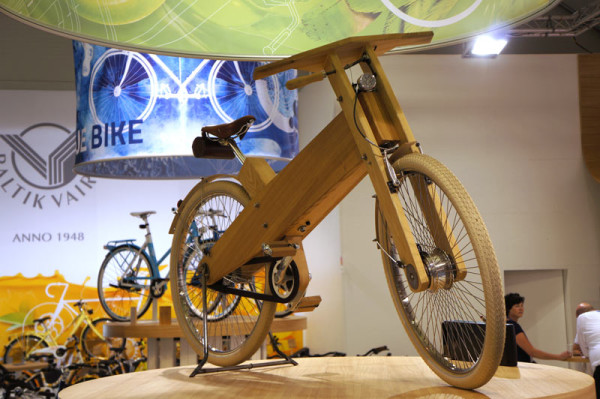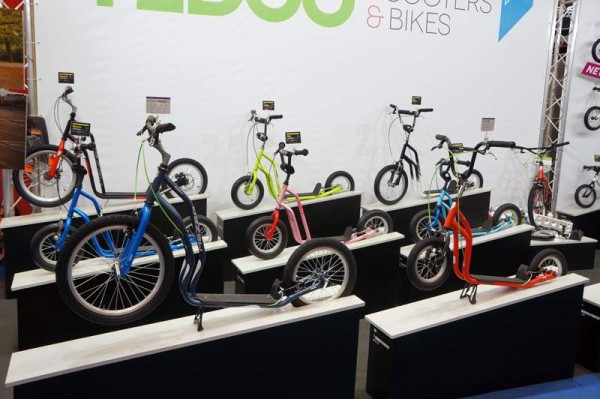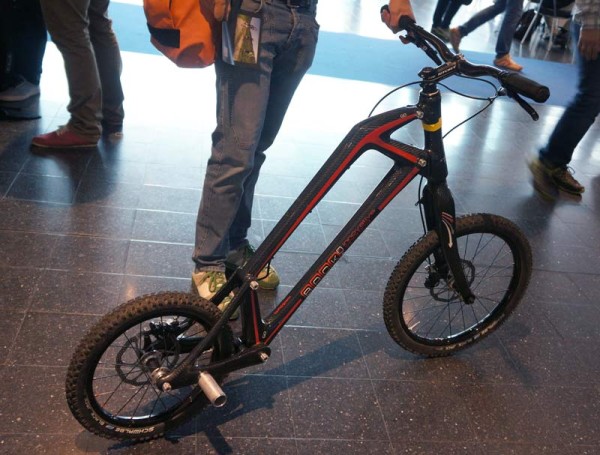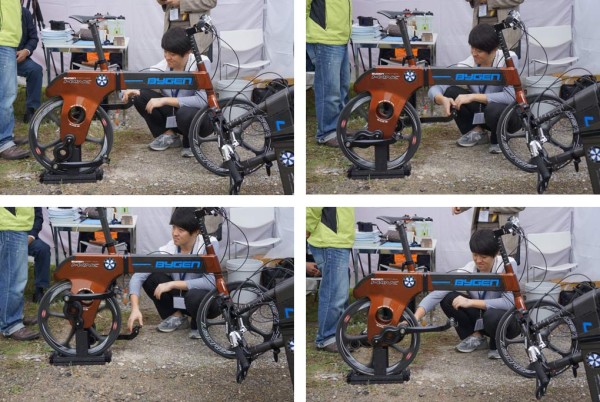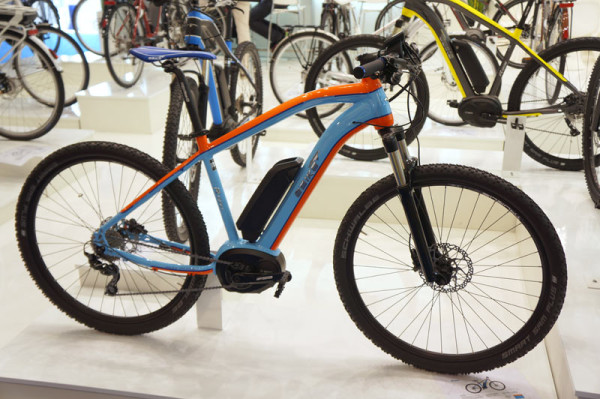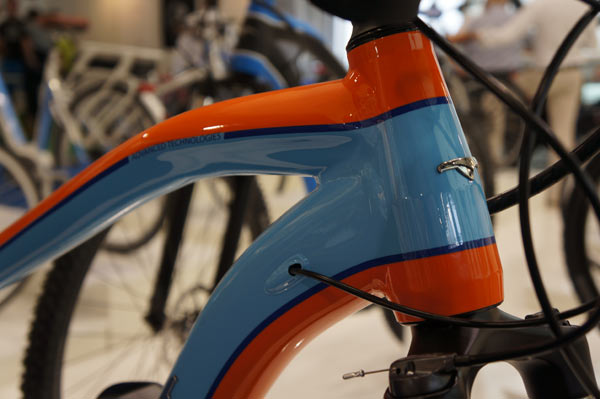Schindelhauer’s bikes and booth always exemplify a clean, sleek appearance that screams high end. The belt driven track bike above streamlines everything into smooth shapes, recessed bolts and flowing lines. Same for the commuter bike after it, which has an equally quick looking frame but manages to hold lights, a rear rack and traditional flat bar.
There are plenty more examples of curvy city bikes after that, too…
The Hektor is a new track frameset made of oversized, triple butted and aero shaped aluminum tubes.
Remove the dropout to open the frame for belt installation.
The Friedrich has an 8-speed internally geared rear hub and dynamo powered lights.
AIT bicycles had this beautifully sculpted bicycle that cleverly hides the fact that it’s an e-bike.
The fenders are formed from the same metal as the tubes, and the battery and electronics are hidden in a wooden box. The motor is at the bottom bracket.
This one’s made for smaller spaces, allowing the handlebar to quickly twist flat for less intrusive storage. I couldn’t find a website for the brand (possibly 2IT ?), leave it in the comments if you know.
BESV is a premium e-bike brand, and the Lion LX1 is their top model. Featuring a curvy alloy frame. It hides the Sony battery and smarts inside the frame, and offers an automatic mode called Algorhythm that provides a varying amount of assist based on conditions so you can just focus on the ride. A headlight is integrated into the stem, as is the control panel, which has a large screen and easy to read data. The motor is at the rear hub. The system provides up to 80km (~50 miles) per charge.
This step through concept either hides the motor, too, or it’s a traditional pedal-power-only bicycle.
Biomega’s NYC city bike has a nifty fender built into the downtube. The belt drive comes on both models, but you pick between a SRAM 2-speed automatic and 8-speed electronic Alfine group. The fork is coated with glow-in-the-dark paint, hence the slightly greenish hue.
The Boston (on right) integrates the cable lock into the frame, so if it’s cut, the bike can’t be ridden. A fold up basket makes it smaller when you don’t need the cargo capacity. For bigger loads, the concept bike in the back extends the wheel base, though the load does seem a bit high for anything heavy.
Amaro is an Spanish brand that only builds custom steel bikes from Columbus and Dadacciai steel tubes. And only bikes that are in line with the kind of bike they want to build.
Riese & Müller is another premium e-bike brand (see a trend here? e-bikes are big in Europe), and this one looks pretty killer for getting lots of stuff to and fro. Rear suspension, low center of gravity and disc brakes plus a weatherproof cargo box for the win.
Then there’s this for the luddites.
Scooters weren’t nearly as big in Europe, though. Not nearly as big as they were at Interbike. Seriously…just wait for that roundup. Regardless, Yedoo had a wide range of sizes, some even with disc brakes.
But if you’re into downhill scooting, there’s this. Other brands have suspension, but this is carbon fiber. Anyone find a website for it, leave it in the comments.
The Bygen Hank (oddly, for Hand Bike) uses a direct drive system with levers sticking forward from the cranks that magically stay level so you can push against them just as you would the pedals. The frame’s beam-style top tube slides backward into the frame, making it extremely compact and easy to wheel into an office or elevator. Once compacted, it’ll stand on it’s tail, too. The handlebar’s ends pivot inward, latching together to further reduce its footprint.
Ebike International makes a number of models, but it’s the R003 that caught our eye. The “R” stands for its Race series, and the Gulf Racing paint scheme certainly lends to that theme.
